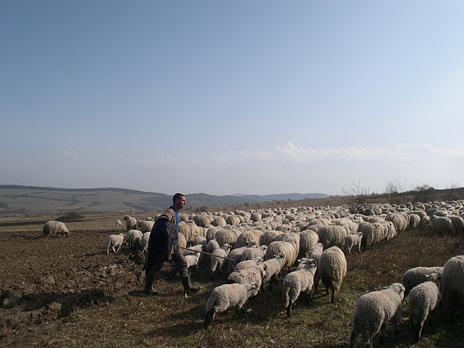British writer publishes extensive research of traditional Carpathian sheep walking in Romania

A British writer and artist has researched transhumance in Romania, the Carpathian sheep walking, over the last seven years, and published an extensive report about it, highlighting the cultural and economic traits, as well as the main threats over this century – long tradition which is becoming increasingly rare.
Caroline Juler focuses in her report on four transhumant families from Mărginimea Sibiului, in the southern Carpathian Mountains, an area which is famous for its shepherding skills. She describes how a family from the village of Jina in this region manages its sheep, the hired shepherds and the seasonal journeys.
Juler took several trips to Romania between 2007 and 2013, to collect and record material about the phenomenon of transhumance. She interviewed farmers, shepherds, their families, as well as historians, ethnographers and government officials.
The British writer found that life becomes harder for Romania's transhumant herdsmen, who choose short-distance transhumance, rather than long sheep walks. Long-distance sheep walks is currently being blocked by road building and hostility from landowners, hunters and police, according to Juler’s report.
In Romania, raising sheep is still an important source of revenues, and the country has the third largest flock in the EU – 11 million breeding ewes.
The full report is here, in English.
More about the author, on her site here.
editor@romania-insider.com
(photo source: Caroline Juler's website)












